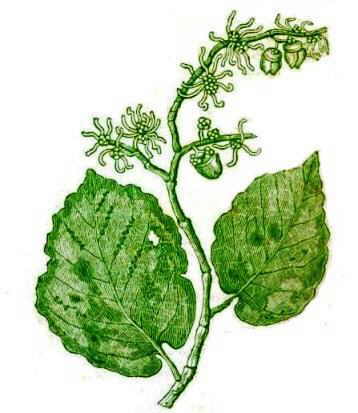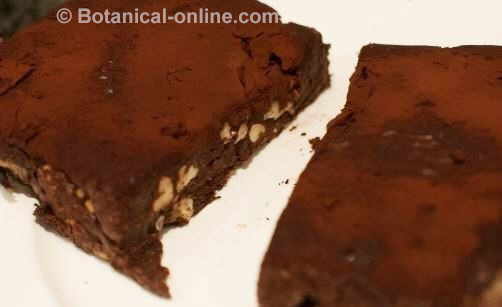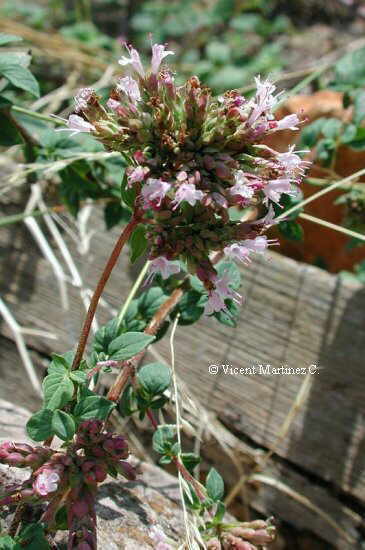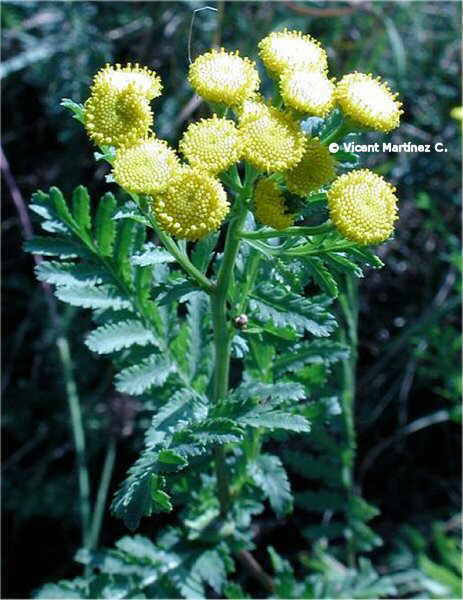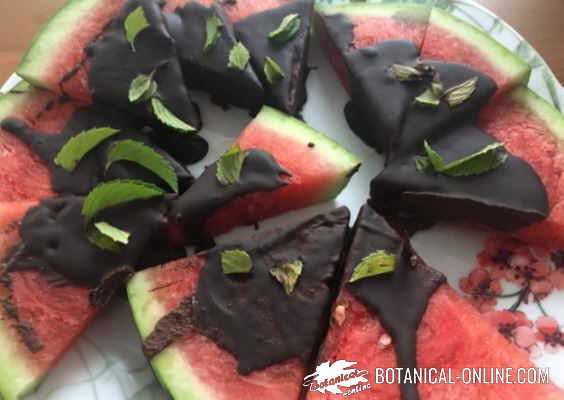Contents
Witch hazel remedies
WITCH HAZEL CURATIVE PROPERTIES
(Part II)
Witch hazel is very good for the skin
Used externally on the skin, witch hazel can help solve many problems such as:

Illustration of the plant Skin lesions: It helps healing skin lesions, reduces pain and prevents infection: non-serious burns, including sunburn, frostbite, scratches, abrasions, cuts, punctures, damage when shaving, etc. (Apply witch hazel on injuries)
- Insect bites: Its anti-inflammatory and antibiotic properties can prevent swelling because of insect bites such as mosquitoes, lice, crabs, etc.. (Apply witch hazel on the bites)
- Pain management: It is a good anti-inflammatory and has analgesic properties so it can be used to reduce inflammation and pain in joints or sore muscles. Very useful in the treatment of sprains, dislocations, backache, as well as strains and muscle tears. (Apply a witch hazel to the affected area)
- Feet pain: The decoction of a teaspoon of bark per liter of water can be used for feet baths. This treatment has turned out to be great for relieving tired feet after a long walk. If blisters have appeared as a result of rubbing the shoes with the skin, witch hazel’s antiseptic properties will help to prevent infection and encourage healing.This remedy can be used by those pilgrims on the journey of the Route of Santiago who usually have many problems with their feet after so many hours walking.If you do not have witch hazel bark, you can dilute a few drops of tincture of witch hazel into a basin of hot water and let stand your feet for 10 minutes. To cure the scratches you can use witch hazel cream with which you will apply on the affected area and will cover with a small bandage.
- Tonsillitis: Its antibiotic and astringent properties can be used for treating tonsils inflammation. (Decoction of a teaspoon of witch-hazel bark per liter of water for 10 minutes. Make gargles with the liquid resulting from this decoction)
- Eyes diseases: This plant possesses an anti-inflammatory action that can be useful for treating eye problems such as:
- Conjunctivitis: It reduces inflammation and relaxes the eyes (Apply witch hazel on the affected eyes)
- Bags under the eyes: The same preparation is very useful to lower eyelid bags produced as a result of exhaustion, eyes disease, blows to the eyes, sleep disorders, etc..
- Problems of the vagina: Witch hazel can improve problems of vaginal infections, being very useful in case of vaginitis, vaginal discharge, irritation, itching, etc.. (Decoction of a spoonful of dried bark per liter of water. Wash the affected are with the liquid resulting from this decoction)
Witch hazel for cosmetics
Witch-hazel forms part of the composition of numerous creams, soaps and tonics for skin care. It is used, for example, in aftershave lotions being able to disinfect small irritations that the blade or the razor produces in the skin of the face. (Applying a little witch hazel on your face after shavings will achieve the same effect as if we use the most expensive aftershave in the market)
As a good astringent, it also appears in the skin care tonics to be especially suitable for oily skin, on which it acts to remove the excess of fat and closes the too irritated skin pores. (Apply a facial massage using a small cotton with a few drops of witch hazel)
It is a component of many cosmetic products combined with other herbs such as aloe vera
Toxicity and contraindications of witch-hazel
In therapeutic doses and external use, witch hazel presents no problem except some skin reactions in people who can not tolerate this plant. Used internally, you must take into account the following precautions:
- It is not appropriate in certain gastrointestinal problems, such as ulcerative colitis, heartburn and diverticulitis.
- Its tannin content can produce adverse reactions in some people with a weak stomach. In this case it is necessary to decrease the dose.
- You should not use this plant for internal use in long term treatment because it contains safrole which could be cancerous, as has been shown in numerous animal studies. Safrole is used in the food industry and cosmetics. In some countries like the United States, it has been banned and it is considered an illegal substance.
- Its use reduces iron absorption so it is inappropriate for people with low levels of this mineral, such as people with anemia.
- Its use reduces the action of anticoagulants, so it should therefore be monitored in people taking blood thinning medications.
- No internal preparations should be used without the consent of the physician. This is especially required for the elderly or the sick. Preparation of this plants shall be used only for adults.
Other plants of the genus “Hamamelis”
The genus Hamamelis comprises 5 species of deciduous shrubs. Most bloom in winter, presenting cream, yellow or gold flowers that are very aromatic. The leaves are deciduous and fall before flowers are born.
Apart from Hamamelis virgiana, studied here, there are the following species of Hamamelis.
- Japanese witch hazel (Hamamelis japonica): It is a Japanese shrub up to 4, 5 m. Its leaves are oval. They are born in spring. Flowers are yellow with twisted petals, blooming in the mid to late winter. In herbal medicine, it used as a diuretic, haemostatic, antidiarrheal, cardiotonic and stomachic
- Chinese witch hazel (Hamamelis mollis) Being from China, it reaches a similar height to the previous one although it looks a more open shrub. Its golden flowers last until early spring. It presents more elongated and leathery leaves with dense pilosity on their back. Non medicinal uses of this species are reported.
- Winter hazel, vernal witch hazel (Hamamelis vernalis) Much lower than the previous ones, this shrub reaches only about 2 meters tall. Unlike previous ones, it blooms in spring producing very aromatic yellow flowers. Non medicinal uses of this species are reported.
- Hamamelis x intermedia: They are cultivars derived from crosses between Hamamelis japonica and Hamamelis mollis. They are characterized by their oval leaves. The most distinguished one is the variety Hamamelis intermedia “ruby glow” that acquires a beautiful shade of rusty red in autumn. Its flowers come out in winter when leaves have fallen. No medicinal properties are attributed to them.
![]() More information on witch hazel.
More information on witch hazel.

